
Greater Queens Podiatry, PLLC
 (718) 229-0222
(718) 229-0222
 (718) 229-0222
(718) 229-0222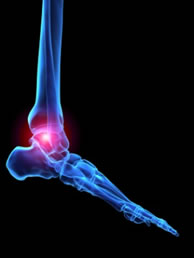 Bone broth has been the new health fad in preventing diseases such as arthritis. While people have been using bone broth to ease their pains for a very long time, there is not a lot of research to back up its helpful claims. Elisabetta Politi, dietician and director of the Diet and Fitness Center at Duke University, also questions these claims. She states, “the cooking method will draw out cartilage-building substances like glucosamin and condroitin. Many people take them in pill form to combat arthritis, but clinical trials haven’t shown they’re effective.”
Bone broth has been the new health fad in preventing diseases such as arthritis. While people have been using bone broth to ease their pains for a very long time, there is not a lot of research to back up its helpful claims. Elisabetta Politi, dietician and director of the Diet and Fitness Center at Duke University, also questions these claims. She states, “the cooking method will draw out cartilage-building substances like glucosamin and condroitin. Many people take them in pill form to combat arthritis, but clinical trials haven’t shown they’re effective.”
Arthritis can be a difficult condition to live with. If you are seeking treatment, contact Dr. Nicholas Megdanis from Greater Queens Podiatry PLLC. Our doctor will treat your foot and ankle needs.
Arthritic Foot Care
Arthritis is a joint disorder that involves inflammation of different joints in your body, such as in your feet. Arthritis is often caused by a degenerative joint disease and causes mild to severe pain in all affected areas. On top of this, swelling and stiffness in the affected joints can also be a common symptom of arthritis.
In many cases, wearing ill-fitting shoes can worsen the effects and pain of arthritis. Wearing shoes that have a lower heel and extra room can help your feet feel more comfortable. In cases of rheumatoid arthritis, the arch in your foot may become problematic. Buying shoes with proper arch support that contour to your feet can help immensely.
Alleviating Arthritic Pain
· Exercises that stretch the foot can prevent further pain and injury and increase mobility
· Most of the pain can be alleviated with anti-inflammatory drugs, heat, and topical medications
· Massages can help to temporarily alleviate pain.
It is best to see your doctor for the treatment that is right for your needs and symptoms. Conditions vary, and a podiatrist can help you determine the right method of care for your feet.
If you have any questions, please feel free to contact our office located in Bayside, New York. We offer the newest diagnostic and treatment technologies for all your foot and ankle needs.
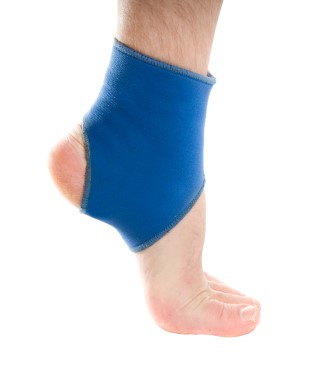 Jeremy Lin of the Charlotte Hornets had to be removed from a game against the Jazz due to a sprained ankle. After scoring four points within two rebounds and an assist, Lin sustained his injury. Lin’s current condition is not known since further evaluation of the injury is still necessary. Players Brian Roberts and Aaron Harrison are next in line to sub in Lin’s place.
Jeremy Lin of the Charlotte Hornets had to be removed from a game against the Jazz due to a sprained ankle. After scoring four points within two rebounds and an assist, Lin sustained his injury. Lin’s current condition is not known since further evaluation of the injury is still necessary. Players Brian Roberts and Aaron Harrison are next in line to sub in Lin’s place.
Ankle sprains are common, but need immediate attention. If you have any concerns about your feet or ankles, contact Dr. Nicholas Megdanis from Greater Queens Podiatry PLLC. Our doctor will treat your foot and ankle needs.
How Does an Ankle Sprain Occur?
Ankle sprains take place when the ligaments in your ankle are torn or stretched beyond their limits. There are multiple ways that the ankle can become injured, including twisting or rolling over onto your ankle, putting undue stress on it, or causing trauma to the ankle itself.
What are the Symptoms?
● Mild to moderate bruising
● Limited mobility
● Swelling
● Discoloration of the skin (depending on severity)
Preventing a Sprain
● Wearing appropriate shoes for the occasion
● Stretching before exercises and sports
● Knowing your limits can aid in prevention
Treatment of a Sprain
Treatment of a sprain depends on the severity. Many times, people are told to rest and remain off their feet completely, while others are given an air cast. If the sprain is very severe, surgery may be required.
If you have suffered an ankle sprain previously, you may want to consider additional support such as a brace and regular exercises to strengthen the ankle.
If you have any questions, please feel free to contact our office located in Bayside, New York. We offer the newest diagnostic and treatment technologies for all your foot and ankle needs.
Although ankle sprains may not be as serious as a broken ankle, they should be given immediate attention and care. An ankle sprain can lead to a significant amount of pain, as well as limited mobility. They are often characterized by the swelling and discoloration of the skin. This occurs when the ligaments are stretched beyond their limits.
The simple act of walking can sometimes cause a sprain, which makes ankle sprains a very common injury that can happen to anyone. They occur when the ankle twists in an awkward way or rolls over itself, causing a pop or snap in the tendons around the ankle. Some people are more at risk than others. These include athletes who continually push their bodies to the limits and also people who have previously suffered accidents to the feet, ankles, or lower legs.
Most of the time, an ankle sprain is not severe enough for hospital attention. There are many at-home treatment options available, including propping the leg up above your head to reduce blood flow and inflammation, applying ice packs to the affected area as needed, taking over the counter pain relievers and anti-inflammatory medication, using an ACE bandage to wrap and support the injured ankle, and most importantly, remaining off your feet until the ankle has fully healed.
Despite this, an ankle sprain can turn into a severe injury that might require hospitalization. If the ankle ligaments or muscles are damaged from a tear or rip, that is one sign that the sprain is severe enough for hospital attention and possibly for surgery. Even after the surgery, the recovery process can be long. You may need to have rehabilitation sessions administered by your podiatrist to get your ankle back to full health.
The severity of your sprain might become apparent if you are unable to stand or walk, consistent pain is occurring over a prolonged period of time, swelling is much more severe than initially present, or if you start to experience tingling or numbness. These signs may indicate that your ankle sprain might actually be a broken ankle, an injury that requires immediate medical attention.
Although they are not completely avoidable, ankle sprains can be curbed with some preventative treatment measures. These include wearing appropriate fitting shoes that not only provide a comfortable fit, but also ankle support. It is also recommended to stretch before doing any kind of physical activity, as this will help lower your body’s chance for an injury.
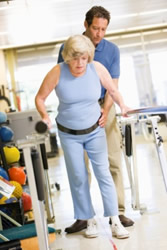 Geriatricians are podiatrists who specialize in treating the elderly, but the profession is considered an uncommon field. According to nytimes.com, “geriatrics is one of the few medical specialties in the United States that is contracting even as the need increases,” indicating that more older adults are in need of having their feet checked and treated. Geriatricians are important because they are “certified in internal or family medicine” and they have “completed additional training in the care of older adults.” Geriatricians are able to treat older adults, addressing problems that may extend beyond ordinary foot care.
Geriatricians are podiatrists who specialize in treating the elderly, but the profession is considered an uncommon field. According to nytimes.com, “geriatrics is one of the few medical specialties in the United States that is contracting even as the need increases,” indicating that more older adults are in need of having their feet checked and treated. Geriatricians are important because they are “certified in internal or family medicine” and they have “completed additional training in the care of older adults.” Geriatricians are able to treat older adults, addressing problems that may extend beyond ordinary foot care.
If you need your feet checked, contact Dr. Nicholas Megdanis from Greater Queens Podiatry PLLC. Our doctor will treat your foot and ankle needs.
Geriatrics and Podiatry
When people age, some common issues that may occur are bone density loss, dry skin, poor circulation, and even rough brittle nails. These issues may also affect your foot health if the necessary steps are not taken to alleviate the problems.
It is important to take care of your feet because feet that are injured or diseases can affect your overall health and having painful feet hinders your ability to do daily activities or may decrease your willingness to do the things that you need to do.
Visiting Your Geriatrician
As we age, health problems become more likely, so it is essential to visit your doctor for check-ups to ensure that you are doing the best you can to take care of your health. It is recommended to check your feet frequently for any possible cuts, bruises, swelling, corns or anything else that may seem irregular.
Taking Care of Elderly Feet
Cracked or dry feet can be treated by applying moisturizer often. It is also important not to wear old socks because the older the sock is, the higher the possibility there will be that there is bacteria there. So wear fresh socks and make sure they fit properly.
Lastly, good foot health means you can have a more active lifestyle and you will not be bogged down by pain. Foot health can also lead to good circulation which is paramount to overall health.
If you have any questions, please feel free to contact our office located in Bayside, New York. We offer the newest diagnostic and treatment technologies for all your foot and ankle needs.
Bone density loss, dry skin, poor circulation, and rough brittle nails are some of the common problems that can occur as people age. The effect that these problems have on foot health should be of particular concern in comprehensive geriatric care.
Feet that are diseased or injured have a negative effect on overall health and safety. Painful feet limit a person’s willingness and ability to stay active. Poor foot health can also cause gait change, which can lead to falls and accidents. Even though recovery time from health problems naturally slows as we age, many foot problems can be avoided altogether with regular prophylactic care.
Feet should be thoroughly washed in warm water daily. Care must be taken to dry the feet well, making sure to dry between and under the toes. Any left-over moisture can cause problems like foot fungus. After cleaning feet carefully check for problems such as cracked skin, bruises, swelling, cuts, corns, or other irregularities.
Examine toenails for ingrown, jagged, or split nails. Long toenails should be cut straight across. Never cut toenails at an angle or down the side as this may lead to ingrown nails.
Cracked and dry feet should be treated once or twice a day with a non-greasy moisturizer. Rub the moisturizer into the skin and allow it to dry before putting on socks and shoes. Sweaty feet can be dusted with a small amount of talcum powder. Avoid putting talcum directly into shoes as this may make feet slip within the shoe and cause a serious fall.
Wear clean dry socks each day. Not only do clean socks feel better on the feet, but socks worn for longer periods may harbor disease and odor-causing bacteria. Socks should not be tight around the top as they can leave marks on the leg. Socks that are too small can bring about bruising caused by pressure against the toes.
Wear comfortable and well-fitting shoes. If possible, consult a professional footwear specialist when purchasing shoes. Do not walk around barefoot as this exposes the feet to possible injury and bacteria.
Good foot health allows a more active lifestyle, which improves blood flow. Good circulation aids in recovery from injury or illness. It is also important for maintaining overall health.
Serious health problems can manifest themselves as symptoms in the feet. The elderly should seek professional help from a podiatrist if experiencing foot problems like tingling, numbness, pain, infection, or a sore that does not heal. Taking care of these problems right away can prevent the development of severe cases.
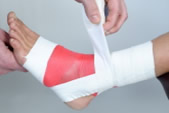 Stephen Brown Junior, jockey apprentice, will not be on the saddle for a short period of time as his broken ankle heals. The injury was sustained during a fall at a race on King Island. As the horse and his jockey were ready to head towards the barriers, the bucking horse caused the 16-year-old to land awkwardly, rolling his foot inward. “I was just starting to kick things off a little bit and had ridden a couple of winners in the past few weeks so it’s disappointing, but these things happen,” the young jockey stated.
Stephen Brown Junior, jockey apprentice, will not be on the saddle for a short period of time as his broken ankle heals. The injury was sustained during a fall at a race on King Island. As the horse and his jockey were ready to head towards the barriers, the bucking horse caused the 16-year-old to land awkwardly, rolling his foot inward. “I was just starting to kick things off a little bit and had ridden a couple of winners in the past few weeks so it’s disappointing, but these things happen,” the young jockey stated.
Broken ankles need immediate treatment. If you need your feet checked, contact Dr. Nicholas Megdanis from Greater Queens Podiatry PLLC. Our doctor will treat your foot and ankle needs.
Broken Ankles
A broken ankle is experienced when a person fractures their tibia or fibula in the lower leg and ankle area. Both of these bones are attached at the bottom of the leg and combine to form what we know to be our ankle.
When a physician is referring to a break of the ankle, he or she is usually referring to a break in the area where the tibia and fibula are joined to create our ankle joint. Ankles are more prone to fractures because the ankle is an area that suffers a lot of pressure and stress. There are some obvious signs when a person experiences a fractured ankle, and the following symptoms may be present.
Symptoms of a Fractured Ankle
● Excessive pain when the area is touched or when any pressure is placed on the ankle
● Swelling around the area
● Bruising of the area
● Area appears to be deformed
If you suspect an ankle fracture, it is recommended to seek treatment as soon as possible. The sooner you have your podiatrist diagnose the fracture, the quicker you’ll be on the way towards recovery.
If you have any questions, please feel free to contact our office located in Bayside, New York. We offer the newest diagnostic and treatment technologies for all your foot and ankle needs.
Broken ankles are a serious injury that can lead to an inability to walk, function, and also cause a significant amount of pain. A broken ankle is a break in one of the three bones in your body that connect at the ankle joint, the tibia, the fibula, and the talus. The tibia and fibula are your two primary leg bones that connect at the knee, which sit directly upon the talus bone. This is protected by a fibrous membrane that allows for movement in our ankle joint. A broken ankle is usually caused by the foot rolling under or twisting too far, causing one of these three bones to snap.
A broken ankle is different from an ankle sprain, which occurs when the ligaments are ripped or torn but no bones have been broken. A sprain can still be very severe, causing bruising in the foot and an inability to hold your own weight, much like a broken ankle would. If you’re unable to stand, and suspect that you have a broken ankle, the first thing to do would be to get an immediate x-ray to determine the severity of the break.
A common cause of broken ankles is when the ankle is rolled over with enough pressure to break the bones. This usually happens during exercise, sports, or other physical activity. Another common cause is a fall or jump from a tall height.
One immediate treatment for pain relief is elevating the feet above your head to reduce blood flow to the injured area. You can also apply ice packs to your ankles to help reduce swelling, redness, inflammation, and pain. After these initial steps, getting a cast and staying off your feet as much as possible will aid in the recovery of the broken ankle. The less movement and stress the ankle has to endure, the more complete it will heal. A doctor can determine if surgery is needed in order to heal correctly. In these cases, an operation may be the only option to ensure the ability to walk properly again, followed by physical therapy and rehabilitation.
It is highly important to determine if surgery is needed early on, because a broken ankle can become much more severe than you realize. If not professionally treated, the broken ankle will inhibit your walking, daily functioning, and produce a large amount of pain. Treating your broken ankle early on will help prevent further damage to it.
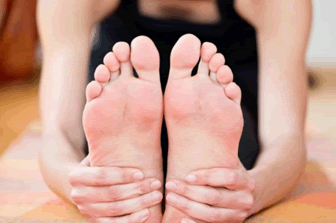 If your feet are aching, it may be because they aren’t stretched and maintained. If you exercise often or you’re just walking around and you feel your legs and feet aching, you may need to start strengthening your muscles. There are simple stretches designed to help target certain muscles in your legs and feet, which can alleviate pain and soreness. These stretches include squatting throughout the day, tai chi and yoga stances, and stretching your calves, quadriceps, hamstrings and thighs, back and hip.
If your feet are aching, it may be because they aren’t stretched and maintained. If you exercise often or you’re just walking around and you feel your legs and feet aching, you may need to start strengthening your muscles. There are simple stretches designed to help target certain muscles in your legs and feet, which can alleviate pain and soreness. These stretches include squatting throughout the day, tai chi and yoga stances, and stretching your calves, quadriceps, hamstrings and thighs, back and hip.
Stretching the feet is a great way to prevent injuries. If you have any concerns with your feet contact Dr. Nicholas Megdanis from Greater Queens Podiatry PLLC. Our doctor will treat your foot and ankle needs.
Stretching Your Feet
Being the backbone of the body, the feet carry your entire weight and can easily become overexerted, causing cramps and pain. As with any body part, stretching your feet can serve many benefits. From increasing flexibility to even providing some pain relief, be sure to give your feet a stretch from time to time. This is especially important for athletes or anyone performing aerobic exercises, but anyone experiencing foot pain or is on their feet constantly should also engage in this practice.
Good ways to stretch your feet are:
● Crossing one leg over the others and carefully pull your toes back. Do 10-20 repetitions and repeat the process for each foot
● Face a wall with your arms out and hands flat against the wall. Step back with one foot and keep it flat on the floor while moving the other leg forward. Lean towards the wall until you feel a stretch. Hold for 30 seconds and perform 10 repetitions for each foot
● Be sure not to overextend or push your limbs too hard or you could risk pulling or straining your muscle
Individuals who tend to their feet by regular stretching every day should be able to minimize foot pain and prevent new problems from arising.
If you have any questions, please feel free to contact our office located in Bayside, New York. We offer the newest diagnostic and treatment technologies for all your foot and ankle needs.
Debilitating foot pain is a problem for many people. But just as stretching the torso can help alleviate back pain, stretching the feet can also help mend existing foot problems and prevent future ones.
The feet, as the body’s foundation, carry the body’s entire weight and can get easily strained from overexertion. Persistent sharp pain and cramping in the feet are often common concerns. Foot pain and foot problems can be due to any number of causes. In many cases pain may be eased without medication or doctor visits. It is always a good idea, however, to first rule out any serious medical issues with a physician.
Stretching can help relax the feet and alleviate pain, but is especially important before heavy aerobic exercise. Stretching before such activities can help you avoid experiencing painful cramps or strained foot muscles. Stretches should be performed slowly and deliberately without forceful pulling. The stretch should be held for several seconds before relaxing.
A great way to stretch out and loosen up the foot muscles while sitting is to cross one leg over the other and pull the toes carefully back without overextending. Start by resting the left ankle on the right knee. With the left hand, gently flex the left foot by pulling back on the toes. Do not pull too hard, just hard enough to feel the stretch in the arch of the foot. Then point the toes of the left foot as far as you can. Rotate the motion of pointing with pulling back on the toes. This should relax and stretch the muscles on the bottom and the top of the foot. Doing this stretch ten to twenty times should bring relief. Repeat the whole process for the other foot by resting the right ankle on the left knee.
A stretch that focuses on the often injured Achilles tendon involves standing, facing a wall, with your arms out and hands flat against the wall. Step back with one foot, keeping it flat against the floor. Move the other leg forward and lean toward the wall. You should feel a stretch through the back of your leg and your Achilles tendon, but do not push yourself too much. Stop when you feel the stretching sensation and hold for 30 seconds. Ten repetitions may be done for each foot.
Stretching the feet is important for athletes or those performing aerobic exercise. It can also help anyone with foot pain caused by poor footwear, plantar fasciitis, or long hours standing and walking. Individuals who tend to their feet by regular stretching every day should be able to minimize foot pain and prevent new problems from arising.
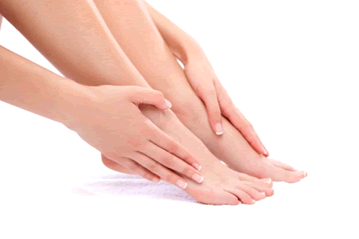 A recent study conducted by the Arthritis Care & Research suggests that smoking or cigarette smoke may possibly lead to lower gout risks. The research indicates, however, that this “27% lower risk” benefit was noted only in men who were lean, non-overweight smokers. Urate levels in the test subjects were “significantly lower” than those who were previous smokers or who have never smoked. Research has never before been done on the correlation between gout and smoking, and the results are new and inconclusive.
A recent study conducted by the Arthritis Care & Research suggests that smoking or cigarette smoke may possibly lead to lower gout risks. The research indicates, however, that this “27% lower risk” benefit was noted only in men who were lean, non-overweight smokers. Urate levels in the test subjects were “significantly lower” than those who were previous smokers or who have never smoked. Research has never before been done on the correlation between gout and smoking, and the results are new and inconclusive.
Gout is a foot condition that requires certain treatment and care. If you have any concerns about gout contact Dr. Nicholas Megdanis from Greater Queens Podiatry PLLC. Dr. George will treat your foot and ankle needs.
What is Gout?
Gout is a type of arthritis caused by a buildup of uric acid in the bloodstream. It often develops in the foot, especially the big toe area, although it can manifest in other parts of the body as well. Gout can make walking and standing very painful and is especially common in diabetics and the obese.
People typically get gout because of a poor diet. Genetic predisposition is also a factor. The children of parents who have had gout frequently have a chance of developing it themselves.
Gout can easily be identified by redness and inflammation of the big toe and the surrounding areas of the foot. Other symptoms include extreme fatigue, joint pain, and running high fevers. Sometimes corticosteroid drugs can be prescribed to treat gout, but the best way to combat this disease is to get more exercise and eat a better diet.
If you have any questions, please feel free to contact our office located in Bayside, New York. We offer the newest diagnostic and treatment technologies for all your foot care needs.
| Bayside Office 4401 Francis Lewis Blvd Suite L3B Bayside, NY 11361 Phone: (718) 229-0222 Fax: (718) 717-0275 | Monday: 9:30am - 7pm |
E-mail us with any questions